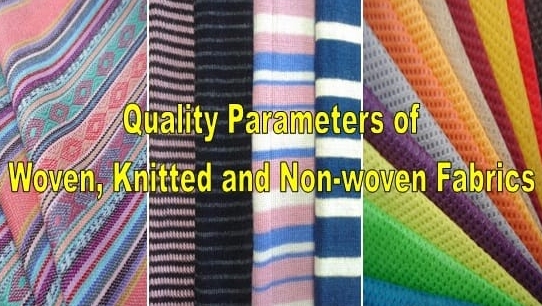Fabrics are an integral part of our daily lives, serving various purposes from clothing to industrial applications. Among the multitude of fabrics available, three primary categories stand out: woven, knitted, and nonwoven. Each type possesses unique characteristics, making them suitable for distinct purposes. In this article, we will delve into the differences between these three types of fabrics, shedding light on their production processes, properties, and applications.

Woven Fabrics: Strength in Structure
Woven fabrics are crafted by interlacing two sets of yarns, known as the warp and weft, at right angles to form a stable and structured material. This interlacing creates a grid-like pattern, resulting in a fabric with a noticeable grain. The tight arrangement of fibers provides woven fabrics with exceptional strength and durability.
Properties:
- Strength and Stability: Woven fabrics tend to be more rigid and stable due to the tightly woven structure, making them ideal for applications requiring strength, such as upholstery and heavy-duty clothing.
- Less Stretch: They have limited elasticity, which means they are less likely to stretch out of shape over time.
- Distinct Patterns: The interlacing pattern allows for intricate designs, plaids, and patterns.
Applications:
- Apparel: Formal wear, suits, jackets, and denim are commonly made from woven fabrics.
- Home Textiles: Bedding, upholstery, curtains, and tablecloths benefit from the durability of woven materials.
- Technical Textiles: Uses include geotextiles, automotive upholstery, and industrial applications.
Knitted Fabrics: Flexibility in Form
Knitted fabrics are created by interlocking loops of yarn, resulting in a more flexible and stretchable material compared to woven fabrics. This unique structure allows for greater freedom of movement and comfort, making knitted fabrics a popular choice for everyday wear.
Properties:
- Stretch and Flexibility: Knitted fabrics have a natural stretch, conforming to the body’s contours, providing comfort and freedom of movement.
- Softness and Comfort: The loops in knitted fabrics create a soft, breathable texture that feels comfortable against the skin.
- Variety of Patterns: Knitting techniques can produce various textures, including ribs, cables, and jacquards.
Applications:
- Apparel: T-shirts, sweaters, socks, and activewear are commonly made from knitted fabrics.
- Sportswear and Performance Clothing: The stretch and breathability make knitted fabrics ideal for sportswear and workout attire.
- Medical Textiles: Used in compression garments, bandages, and orthopedic supports due to their flexibility.
Nonwoven Fabrics: Breaking Boundaries
Nonwoven fabrics are unique in that they are not formed by traditional weaving or knitting methods. Instead, they are created by bonding or interlocking fibers through mechanical, chemical, or thermal processes. This results in a versatile material with a wide range of properties and applications.
Properties:
- Versatility: Nonwoven fabrics can be engineered to possess specific properties, such as absorbency, filtration, or insulation.
- Cost-Effectiveness: They are generally more cost-effective to produce than woven or knitted fabrics, making them a popular choice for disposable products.
- Single-Use and Reusable: Nonwoven fabrics can be designed for one-time use applications (like wipes) or for multiple uses (like surgical gowns).
Applications:
- Hygiene Products: Diapers, wipes, and feminine hygiene products rely heavily on nonwoven fabrics.
- Medical and Healthcare: Surgical gowns, masks, and wound dressings benefit from their sterile and absorbent properties.
- Geotextiles and Agriculture: Nonwovens are used for erosion control, landscaping, and crop protection.
